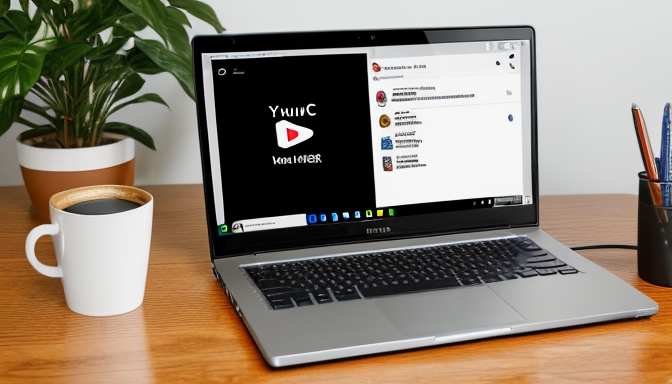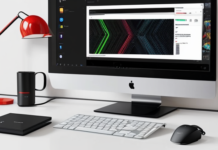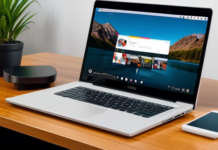This article explores various methods to safely download copyright-free music from YouTube, ensuring compliance with copyright laws while enhancing your projects with high-quality audio tracks.
What is Copyright-Free Music?
Understanding copyright-free music is essential for creators. Copyright-free music refers to tracks that can be used without the need for payment or permission from the original creator. There are various types of licenses associated with copyright-free music, including Public Domain and Creative Commons. Each license has specific guidelines that dictate how the music can be used, making it important for creators to familiarize themselves with these terms to avoid legal complications.
Benefits of Using Copyright-Free Music
- Avoid Legal Issues: Utilizing copyright-free music helps to prevent potential copyright infringement claims.
- Enhance Content Quality: High-quality audio tracks can significantly improve the overall production value of your projects.
- Cost-Effective: Many copyright-free music options are available at no cost, making them budget-friendly for creators and businesses.
Where to Find Copyright-Free Music on YouTube
YouTube offers a variety of resources for finding copyright-free music. Navigating the platform effectively can lead you to suitable tracks that enhance your projects.
YouTube Audio Library
The YouTube Audio Library is a treasure trove of free music. To access it, go to the YouTube Studio, select ‘Audio Library’ from the menu, and browse through the extensive collection of tracks. You can filter music by genre, mood, and duration to find the perfect fit for your project.
Creative Commons Music on YouTube
Many creators use Creative Commons licenses to share their music. To find these tracks, search for music on YouTube and use filters to select those with Creative Commons licenses. Always check the specific license details to ensure proper attribution and usage rights.
How to Download Music from YouTube Safely
Downloading music from YouTube requires caution to avoid copyright infringement. Here are some safe methods:
Using Online Downloaders
Online downloaders can simplify the process of obtaining copyright-free music. Popular tools like YTMP3 and ClipConverter allow you to paste the YouTube link and download audio files easily.
Desktop Software Options
For those seeking more features, desktop applications like 4K Video Downloader and Any Video Converter provide robust options for downloading and managing YouTube music safely.
Understanding Copyright Laws
A fundamental grasp of copyright laws is crucial for creators. Copyright regulations protect the rights of music creators, and understanding these laws helps you navigate the complexities of music usage in your content.
Tips for Choosing the Right Music
Choosing the right music enhances your project’s impact. Consider the mood, genre, and audience when selecting music to ensure it aligns with your content.
Integrating Music into Your Projects
Effectively integrating music into your projects can elevate the overall experience. Use music to complement the visuals, set the tone, and engage your audience.
Conclusion: Making Informed Choices
In conclusion, understanding copyright-free music and safe downloading methods empowers creators to enhance their projects legally and effectively. By following the guidelines outlined in this article, you can make informed decisions that benefit your creative endeavors.
What is Copyright-Free Music?
Understanding copyright-free music is essential for creators looking to enhance their projects without facing legal complications. Copyright-free music refers to audio tracks that are not protected by copyright or for which the copyright owner has given permission for free use. This allows creators to use these tracks in their videos, podcasts, or other content without the risk of copyright infringement.
There are several types of licenses associated with copyright-free music, each with its own terms and conditions. Here are the most common types:
- Public Domain: Music that is in the public domain can be used freely by anyone. This typically includes works whose copyright has expired or was never established.
- Creative Commons Licenses: These licenses allow creators to use music under specific conditions. Some may require attribution to the original artist, while others may restrict the use to non-commercial projects.
- Royalty-Free Music: While not entirely free, royalty-free music allows users to pay a one-time fee to use the track without ongoing royalties. This is often a popular choice for businesses and content creators.
- License-Free Music: Similar to royalty-free, this music can be used without licensing fees, often requiring only that the creator adheres to the terms set by the artist.
When selecting copyright-free music for your projects, it is crucial to read the license agreements carefully. Each type of license comes with its own set of rules, and understanding these can help avoid potential legal issues. For instance, some licenses may allow for modification of the music, while others may not.
In addition to understanding licenses, creators should also consider the quality and relevance of the music they choose. The right track can significantly enhance the emotional impact of a video or presentation, making it more engaging for the audience. Therefore, it’s important to select music that complements the tone and message of your content.
In summary, copyright-free music is a valuable resource for creators. By understanding the different types of licenses and their implications, you can make informed choices that enhance your projects while staying compliant with copyright laws. This knowledge not only protects you legally but also enriches your content, making it more appealing to your audience.
Benefits of Using Copyright-Free Music
In the digital age, where content creation is at an all-time high, the significance of using copyright-free music cannot be overstated. This type of music not only enhances the overall quality of your projects but also provides a range of advantages that are essential for both individual creators and businesses. Below, we explore the key benefits of incorporating copyright-free music into your work.
- Avoiding Legal Issues: One of the primary advantages of using copyright-free music is the ability to steer clear of potential legal complications. Traditional music often comes with stringent copyright laws that can lead to costly licensing fees or even legal action if used incorrectly. By selecting copyright-free tracks, creators can focus more on their content without the fear of copyright infringement.
- Enhancing Content Quality: Music plays a pivotal role in setting the tone and mood of any project. Copyright-free music can significantly elevate the quality of your content, making it more engaging and memorable for your audience. Whether it’s a video, podcast, or presentation, the right music can enhance the emotional connection with viewers.
- Cost-Effective Solutions: Many copyright-free music options are available at little to no cost, making them an economical choice for creators on a budget. This accessibility allows for a broader range of music styles and genres, enabling creators to find the perfect fit for their projects without breaking the bank.
- Creative Freedom: Using copyright-free music often comes with fewer restrictions compared to licensed music. This flexibility allows creators to experiment with different sounds and styles, fostering creativity and innovation in their projects.
- Building Brand Identity: For businesses, the music chosen can become a part of their brand identity. Copyright-free music allows companies to select tracks that resonate with their brand values and messaging, helping to create a cohesive and recognizable audio presence.
- Wide Variety of Options: The availability of copyright-free music has grown tremendously, with numerous platforms offering vast libraries of tracks. This variety ensures that creators can find music that perfectly aligns with their vision, regardless of the genre or mood they wish to convey.
- Ease of Use: Many copyright-free music platforms provide user-friendly interfaces that simplify the process of searching for and downloading music. This ease of access encourages more creators to incorporate music into their projects, ultimately enhancing the quality of content across various platforms.
In conclusion, the benefits of using copyright-free music are manifold. From avoiding legal pitfalls to enhancing the overall quality of content, it is an invaluable resource for creators and businesses alike. By understanding and leveraging these advantages, you can significantly improve your projects while ensuring compliance with copyright laws.
Where to Find Copyright-Free Music on YouTube
YouTube is not just a platform for watching videos; it also offers a rich library of copyright-free music that creators can utilize for various projects. Navigating this vast resource can seem daunting, but with the right approach, you can easily find suitable tracks that enhance your content without worrying about copyright infringement.
To begin with, it’s essential to understand that YouTube hosts a diverse range of music that is free to use, provided you adhere to the licensing agreements associated with each track. This section will guide you through the process of locating and utilizing this valuable resource effectively.
The YouTube Audio Library is a fantastic starting point for anyone seeking copyright-free music. To access it, follow these simple steps:
- Log into your YouTube account.
- Click on your profile picture and select YouTube Studio.
- In the left-hand menu, click on Audio Library.
Here, you will find a wide variety of music tracks and sound effects categorized by genre, mood, and instrument. You can easily preview each track and download the ones that suit your project. Remember to check the attribution requirements, as some tracks may require you to credit the artist in your content.
Another excellent source for copyright-free music is tracks licensed under Creative Commons. This type of music allows for broader use, often with minimal restrictions. To find Creative Commons music on YouTube, you can:
- Use the search bar and enter your desired genre or mood.
- Filter the results by selecting Filters and then choosing Creative Commons under the Features section.
When using Creative Commons music, it is crucial to adhere to the specific license terms, which may include providing proper attribution to the creator.
By utilizing these resources on YouTube, you can enrich your projects with high-quality, copyright-free music. Whether you are creating videos, podcasts, or other media, the right soundtrack can significantly enhance the overall experience for your audience.
In summary, YouTube provides ample opportunities for creators to access copyright-free music through its Audio Library and Creative Commons tracks. By following the guidelines outlined above, you can navigate the platform confidently and find the perfect music for your projects.
YouTube Audio Library
The YouTube Audio Library is an invaluable resource for content creators seeking high-quality, copyright-free music. This library offers a wide array of tracks that can be utilized in various projects, from YouTube videos to podcasts and beyond. Understanding how to effectively access and use this resource can significantly enhance your audio experience.
To begin, accessing the YouTube Audio Library is straightforward. Simply navigate to the YouTube Studio and select the Audio Library option from the menu. Here, you will find a comprehensive collection of music tracks and sound effects that are free to use. The library is categorized by genre, mood, instrument, and duration, making it easy to find the perfect audio for your project.
- Genres: Explore various music styles such as pop, rock, classical, and electronic.
- Moods: Find tracks that match the emotional tone of your content, whether it’s upbeat, dramatic, or relaxing.
- Instruments: Filter music by the primary instrument, such as piano, guitar, or strings.
- Duration: Select tracks based on their length to fit your project’s needs.
Once you find a track you like, downloading it is simple. Just click the download button next to the track, and it will be saved to your device in MP3 format. This allows for easy integration into your video editing software or audio projects.
It is important to note that while the music is copyright-free, some tracks may require attribution. The YouTube Audio Library clearly indicates which tracks need credit, so be sure to check the requirements before using them in your projects. Proper attribution not only respects the creators but also enhances your credibility as a content producer.
In addition to music, the library also offers sound effects, which can add an extra layer of professionalism to your content. These sound effects can range from ambient noises to specific action sounds, helping to create a more immersive experience for your audience.
In conclusion, the YouTube Audio Library is a treasure trove for anyone in need of quality, copyright-free music. By understanding how to navigate and utilize this resource, you can enhance your projects while ensuring compliance with copyright laws. Whether you’re a seasoned creator or just starting out, the Audio Library provides a wealth of options to elevate your content.
Creative Commons Music on YouTube
Creative Commons licenses provide a flexible framework for using music in various projects, allowing creators to share and utilize audio tracks legally. This section will guide you on how to effectively find and use Creative Commons music available on YouTube, ensuring you respect the rights of the original artists while enhancing your own content.
- Understanding Creative Commons Licenses: Creative Commons (CC) licenses are designed to facilitate sharing and collaboration. They come in various forms, each allowing different levels of use. The most common types include:
- CC BY (Attribution): You can use the music as long as you give appropriate credit to the creator.
- CC BY-SA (Attribution-ShareAlike): Similar to CC BY, but any derivative work must be licensed under identical terms.
- CC BY-NC (Attribution-NonCommercial): You can use the music for non-commercial purposes only.
- CC BY-ND (Attribution-NoDerivatives): You can use the music as is, without making changes.
Finding Creative Commons Music on YouTube
To find Creative Commons music on YouTube, follow these steps:
1. Go to YouTube and enter relevant keywords in the search bar.2. After the search results appear, click on the "Filters" option.3. Under the "Features" section, select "Creative Commons" to filter the results.
This will display videos that are licensed under Creative Commons, allowing you to explore a variety of music tracks that you can use in your projects.
Using Creative Commons Music Correctly
When you find a track you want to use, it’s important to adhere to the specific requirements of the license. Here are some best practices:
- Give Credit: Always credit the original creator as specified in the license.
- Check License Terms: Make sure you understand what is permitted under the license. For example, if the license is CC BY-NC, ensure your use is non-commercial.
- Keep Records: Maintain documentation of the music used and the license details for future reference.
Conclusion
Utilizing Creative Commons music from YouTube can greatly enhance your projects while ensuring you respect copyright laws. By understanding the different types of licenses and following the correct usage protocols, you can effectively incorporate high-quality music into your content. Always remember to give proper credit and adhere to the license terms to support the creative community.
How to Download Music from YouTube Safely
Downloading music from YouTube safely is essential for anyone looking to enhance their projects with audio tracks while adhering to copyright regulations. This guide will explore effective and legal methods for downloading music, ensuring you can enjoy your favorite tunes without the risk of infringing on copyright laws.
Many creators seek to download music from YouTube for various purposes, such as creating videos, podcasts, or personal playlists. However, it is crucial to understand the legal implications involved in this process. Below, we outline safe methods to download music that respect copyright laws.
Before diving into the methods, it’s important to recognize the potential risks associated with downloading music from YouTube. Many videos are protected by copyright, and using them without permission can lead to legal consequences. Therefore, always look for copyright-free or Creative Commons licensed music.
- YouTube Audio Library: This is a fantastic resource provided by YouTube that offers a wide range of music tracks and sound effects that are free to use. Users can access this library directly through their YouTube account, and all tracks are copyright-free.
- Creative Commons Music: Many artists upload their music under Creative Commons licenses. You can filter your YouTube searches to find these tracks, ensuring you have the right to use them. Always check the specific license to understand the usage rights.
- Online Downloaders: There are various online tools that allow you to download music from YouTube legally. Look for reputable sites that specifically mention copyright-free music. Always read user reviews to ensure reliability.
- Desktop Software: Programs like 4K Video Downloader or YTD Video Downloader can help you download music safely. Ensure you choose software that supports downloading copyright-free music and follow their guidelines for use.
When downloading music, always keep the following best practices in mind:
- Always verify the license of the music you intend to use.
- Consider the purpose of your project and choose music that fits the mood and theme.
- Keep a record of where you sourced your music in case you need to reference it later.
In summary, downloading music from YouTube can be done safely and legally by utilizing resources like the YouTube Audio Library and Creative Commons music. Always prioritize understanding copyright laws and choose reputable tools for downloading. By following these guidelines, you can enhance your projects with music while staying compliant with legal standards.
Using Online Downloaders
YouTube Copyright Free Music MP3 Download: Discover Safe OptionsIn the digital age, accessing music for your projects has become easier than ever. However, navigating the complexities of copyright can be challenging. This article focuses on the use of online downloaders, which can significantly simplify the process of obtaining copyright-free music from YouTube.
What Are Online Downloaders?
Online downloaders are web-based tools that allow users to extract audio from YouTube videos and save it in various formats, including MP3. These tools are particularly useful for creators looking to enhance their projects with music that is either copyright-free or falls under Creative Commons licenses.
How Do Online Downloaders Work?
Typically, the process is straightforward:
- Step 1: Copy the URL of the YouTube video containing the desired music.
- Step 2: Paste the URL into the online downloader’s input field.
- Step 3: Select the preferred audio format, usually MP3.
- Step 4: Click the download button and wait for the conversion process to complete.
- Step 5: Download the converted file to your device.
Popular Online Downloaders
Several online downloaders are widely recognized for their reliability and user-friendly interfaces. Here are a few options:
- YTMP3: This tool is known for its simplicity and speed, allowing users to convert YouTube videos to MP3 quickly.
- 4K Video Downloader: A versatile tool that not only downloads audio but also video content in various resolutions.
- ClipConverter: This downloader supports a range of formats and offers additional features like video trimming.
Safety and Legal Considerations
While online downloaders make it easy to access music, it’s crucial to ensure that the content being downloaded is copyright-free or properly licensed. Always check the licensing information associated with the music to avoid potential legal issues.
Conclusion
Online downloaders serve as a valuable resource for creators seeking copyright-free music from YouTube. By following the steps outlined and utilizing reputable tools, you can enhance your projects legally and efficiently. Remember to always respect copyright laws and choose music that aligns with your content’s needs.
Desktop Software Options
When it comes to downloading and managing YouTube music, desktop software provides a robust solution that often surpasses online alternatives in terms of features and functionality. These applications not only facilitate the downloading process but also offer tools for organizing and editing your music library. In this section, we will explore several reliable desktop applications that enable users to download YouTube music safely and efficiently.
1. 4K Video Downloader
4K Video Downloader is a popular choice among users looking for a user-friendly interface and powerful capabilities. This software allows you to download entire playlists, channels, and even subtitles in high quality. Its ability to extract audio from videos makes it an excellent tool for anyone wanting to create a personalized music library from YouTube.
2. YTD Video Downloader
YTD Video Downloader is another reliable option that supports a variety of formats for audio and video downloads. With its simple drag-and-drop feature, users can easily manage their downloads. The software also includes a built-in video player, allowing you to preview your music before adding it to your collection.
3. Any Video Converter
Any Video Converter stands out for its versatility. Not only can it download YouTube music, but it also supports a wide range of video formats. Users can convert downloaded files into different audio formats, making it easy to customize their music for various devices. The software also offers basic editing tools, such as trimming and merging, to enhance your audio files.
4. Freemake Video Downloader
Freemake Video Downloader is known for its speed and efficiency. It allows users to download videos and music from YouTube in high quality, including HD and 4K options. The software’s intuitive interface makes it accessible for beginners, while advanced users can take advantage of its batch download feature to save multiple files at once.
5. JDownloader
JDownloader is an open-source software that supports a wide range of platforms. It is particularly useful for users who need to download large files or multiple videos simultaneously. With its automatic captcha recognition and link grabbing capabilities, JDownloader simplifies the downloading process significantly.
In conclusion, using desktop software for downloading YouTube music not only provides enhanced features but also ensures a safer and more organized approach to managing your audio collection. Each of the applications mentioned above offers unique benefits, catering to different user needs and preferences. By choosing the right software, you can enjoy your favorite music while maintaining compliance with copyright regulations.
Understanding Copyright Laws
is essential for anyone involved in content creation, whether you are a musician, filmmaker, or digital artist. Copyright laws protect the rights of creators by ensuring that they have control over how their work is used and distributed. This section aims to provide a comprehensive overview of copyright regulations, particularly as they relate to the usage of music in various projects.
Copyright is a form of intellectual property law that grants creators exclusive rights to their original works, including music. When a piece of music is created, the composer automatically holds the copyright, meaning they have the sole right to reproduce, distribute, and publicly perform the work. However, there are specific exceptions and licenses that allow others to use copyrighted music legally.
- Public Domain: Music that is no longer under copyright protection can be freely used by anyone. This typically applies to works created a certain number of years ago, depending on the jurisdiction.
- Creative Commons Licenses: These licenses allow creators to share their music with specific conditions. Some licenses permit commercial use, while others may require attribution or restrict modifications.
- Royalty-Free Music: This type of music can be purchased or obtained for free, allowing for its use without ongoing royalty payments. However, it’s important to read the terms of use to ensure compliance.
For creators, understanding these distinctions is crucial. Using copyrighted music without permission can lead to serious legal consequences, including fines and the removal of content from platforms like YouTube. Therefore, it is imperative to either seek permission from the copyright holder or use music that falls under public domain or appropriate licenses.
Additionally, it is important to note that copyright laws vary by country. What may be permissible in one jurisdiction might not be in another. Therefore, creators should familiarize themselves with the laws applicable in their region and any regions where their work may be distributed.
In summary, a solid understanding of copyright laws is vital for all creators. By knowing the different types of music licenses and the implications of copyright infringement, you can ensure that your projects remain compliant and that you respect the rights of other creators. This knowledge not only protects you legally but also fosters a culture of respect and collaboration within the creative community.
Tips for Choosing the Right Music
Choosing the right music for your project is a crucial step in ensuring that it resonates with your audience. The right soundtrack can evoke emotions, enhance storytelling, and ultimately elevate the overall impact of your content. In this section, we will explore practical tips for selecting music that aligns with your content and audience, ensuring a harmonious blend that captivates viewers.
- Understand Your Content’s Mood: Before selecting music, it is essential to identify the mood or tone of your project. Is it upbeat and energetic, or calm and reflective? The music should complement the emotions you wish to convey.
- Know Your Audience: Consider the demographics of your audience. Different age groups and cultures may respond to music differently. Tailoring your music choice to your audience’s preferences can significantly enhance engagement.
- Consider the Genre: The genre of music plays a pivotal role in how your content is perceived. For instance, a corporate video may benefit from instrumental background music, while a travel vlog might be better suited to lively, upbeat tracks.
- Keep it Simple: Sometimes, less is more. Overly complex or distracting music can take away from your message. Opt for tracks that support your content without overwhelming it.
- Use Music to Create a Narrative: Music can help tell a story. Consider how the rhythm and progression of a track can mirror the narrative arc of your project, enhancing the viewer’s emotional journey.
- Test Different Options: Don’t settle for the first track you find. Experiment with various music pieces and see how they fit with your content. This trial and error can lead you to the perfect match.
- Check Licensing and Rights: Always ensure that the music you choose is copyright-free or properly licensed. This protects you from potential legal issues and allows you to use the music without worry.
By following these tips, you can enhance the effectiveness of your projects through thoughtful music selection. Remember, the right music not only supports your content but also creates a memorable experience for your audience.
Integrating Music into Your Projects
is not just about adding sound; it’s about creating an immersive experience that resonates with your audience. The right music can evoke emotions, enhance storytelling, and elevate the overall quality of your content. This section delves into best practices for effectively incorporating music into various media formats, including videos, podcasts, and presentations.
Understanding Your Audience
Before selecting music, it’s crucial to understand your audience. Different demographics respond to different musical styles. For instance, younger audiences might prefer contemporary pop or electronic music, while older audiences may lean towards classic rock or jazz. By aligning your music choice with your audience’s preferences, you can create a more engaging experience.
Choosing the Right Music
When selecting music, consider the mood and tone of your project. For example, if you are creating a motivational video, upbeat and energetic tracks will work best. Conversely, for a documentary, softer, ambient music may be more appropriate. Utilize resources like the YouTube Audio Library or Creative Commons music to find tracks that fit your needs.
Timing and Placement
Music should complement your content rather than overpower it. Pay attention to timing and placement of music within your project. For videos, consider using music to enhance key moments, such as transitions, emotional peaks, or conclusions. In podcasts, background music can help maintain listener interest but should be subtle enough to not distract from the dialogue.
Volume Levels
Adjusting the volume levels of your music is essential for a balanced audio experience. Ensure that your music is not too loud, which can drown out spoken content, nor too soft, which may cause it to be overlooked. A good rule of thumb is to keep background music at a lower volume than the main audio track.
Legal Considerations
Always be mindful of copyright laws when integrating music into your projects. Using copyright-free or properly licensed music not only protects you legally but also supports artists. Familiarize yourself with different licenses, such as Creative Commons, to ensure that you are using music appropriately.
Testing and Feedback
Finally, don’t hesitate to test your project with a sample audience before the final release. Gather feedback regarding the music choice, volume levels, and overall impact. This can provide valuable insights and help you make necessary adjustments for a more polished final product.
By following these best practices, you can effectively integrate music into your projects, enhancing the overall experience for your audience and ensuring your content stands out.
Conclusion: Making Informed Choices
In the rapidly evolving world of content creation, the significance of copyright-free music cannot be overstated. As creators, whether you are producing videos, podcasts, or any form of digital media, the ability to use music without the fear of legal repercussions is invaluable. This article aims to delve deeper into the concept of copyright-free music and the methods for safe downloading, ensuring that you can enhance your projects while remaining compliant with copyright laws.
Copyright-free music refers to audio tracks that can be used without obtaining permission from the original creator, often available under various licenses that dictate how the music can be used. Understanding these licenses is crucial as they can vary greatly. For example, some tracks may be used freely for personal projects, while others may require attribution or may not be used for commercial purposes. This knowledge equips you to make informed decisions when selecting music for your projects.
The benefits of utilizing copyright-free music are numerous. Not only does it help avoid potential legal issues, but it also enhances the quality and professionalism of your content. By incorporating high-quality audio, you can significantly improve audience engagement and retention. Furthermore, copyright-free music allows for greater creativity, enabling you to choose tracks that resonate with your message and audience.
YouTube serves as an excellent platform for discovering copyright-free music. The YouTube Audio Library is a valuable resource, offering a wide range of tracks that can be used freely in your projects. Navigating this library is straightforward, and users can search by genre, mood, or instrument, making it easy to find the perfect soundtrack for any project.
Additionally, many creators upload their music under Creative Commons licenses, which allows for various uses depending on the specific license terms. Understanding how to locate and use these tracks appropriately is essential for any content creator looking to enhance their work legally.
When it comes to downloading music, safety is paramount. Utilizing online downloaders or desktop software designed for this purpose can simplify the process while ensuring compliance with copyright laws. Popular online tools can facilitate the safe download of copyright-free music, allowing you to focus on your creative process without legal worries.
In summary, the journey into the realm of copyright-free music is one filled with opportunities for creators. By understanding the licenses, benefits, and safe downloading methods, you can make informed choices that elevate your projects. Embracing these practices not only enhances your content but also fosters a respectful and legal creative environment.
Frequently Asked Questions
- What is copyright-free music?
Copyright-free music refers to audio tracks that can be used without obtaining permission from the original creator. This music typically falls under specific licenses that allow for legal use in various projects, making it easier for creators to enhance their content without the fear of legal repercussions.
- Where can I find copyright-free music on YouTube?
YouTube offers several resources for finding copyright-free music, notably the YouTube Audio Library. This library contains a vast collection of free music that you can use in your videos. Additionally, you can search for tracks with Creative Commons licenses, which can also be used legally under certain conditions.
- How can I safely download music from YouTube?
To safely download music from YouTube, you should use online downloaders or desktop software that specifically cater to copyright-free music. These tools allow you to download tracks while ensuring compliance with copyright laws, helping you avoid any legal issues down the road.
- What are the benefits of using copyright-free music?
Using copyright-free music comes with several benefits, such as avoiding potential legal issues and enhancing the overall quality of your content. It allows creators to focus on their projects without worrying about copyright infringement, making it a smart choice for businesses and individual creators alike.
- How do I choose the right music for my project?
Choosing the right music involves understanding your project’s tone and audience. Think about the emotions you want to evoke and select tracks that complement your visuals. Experimenting with different genres can also help you discover what best fits your content.



















































